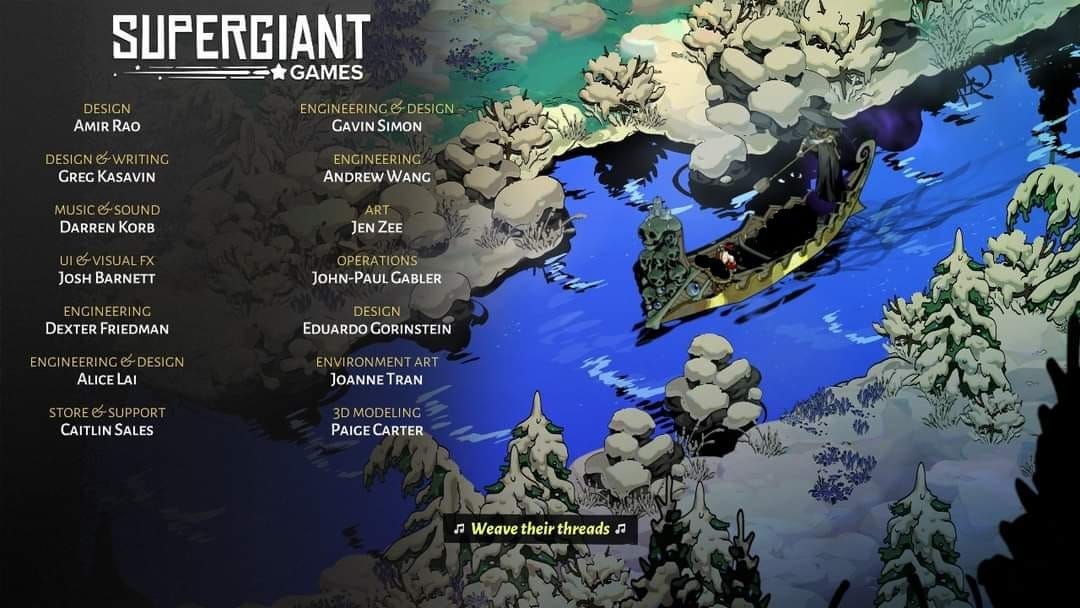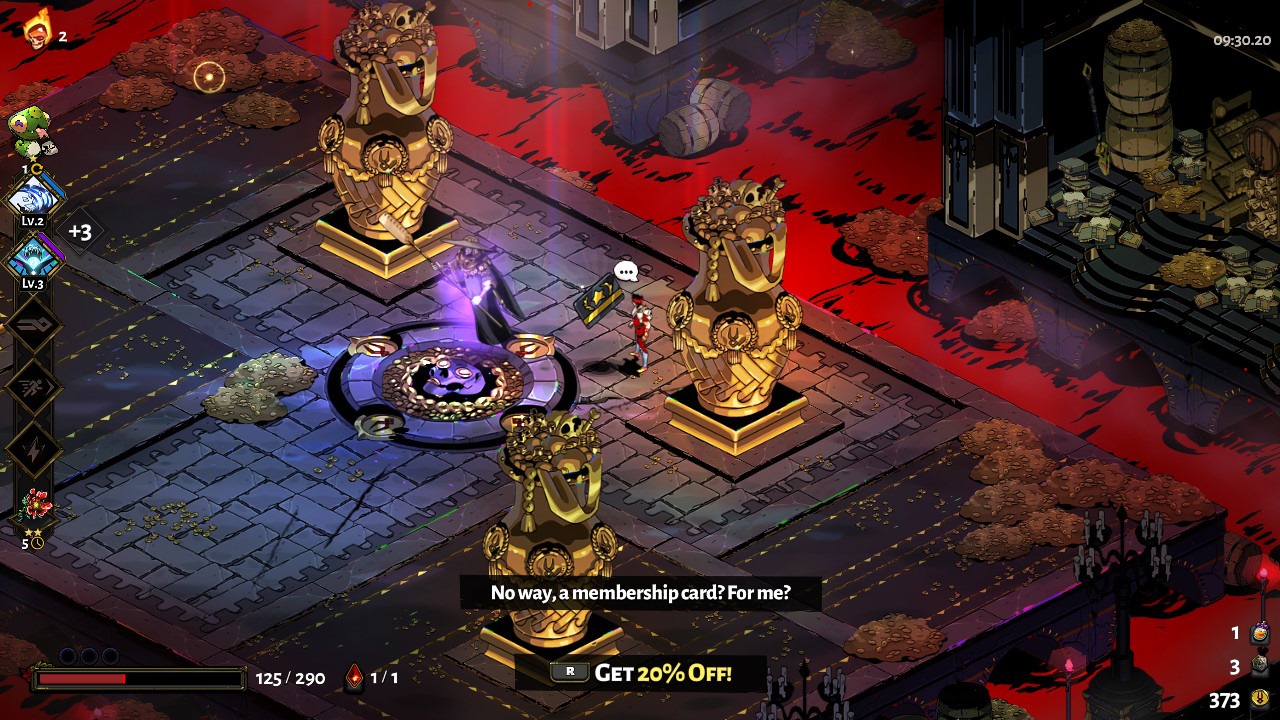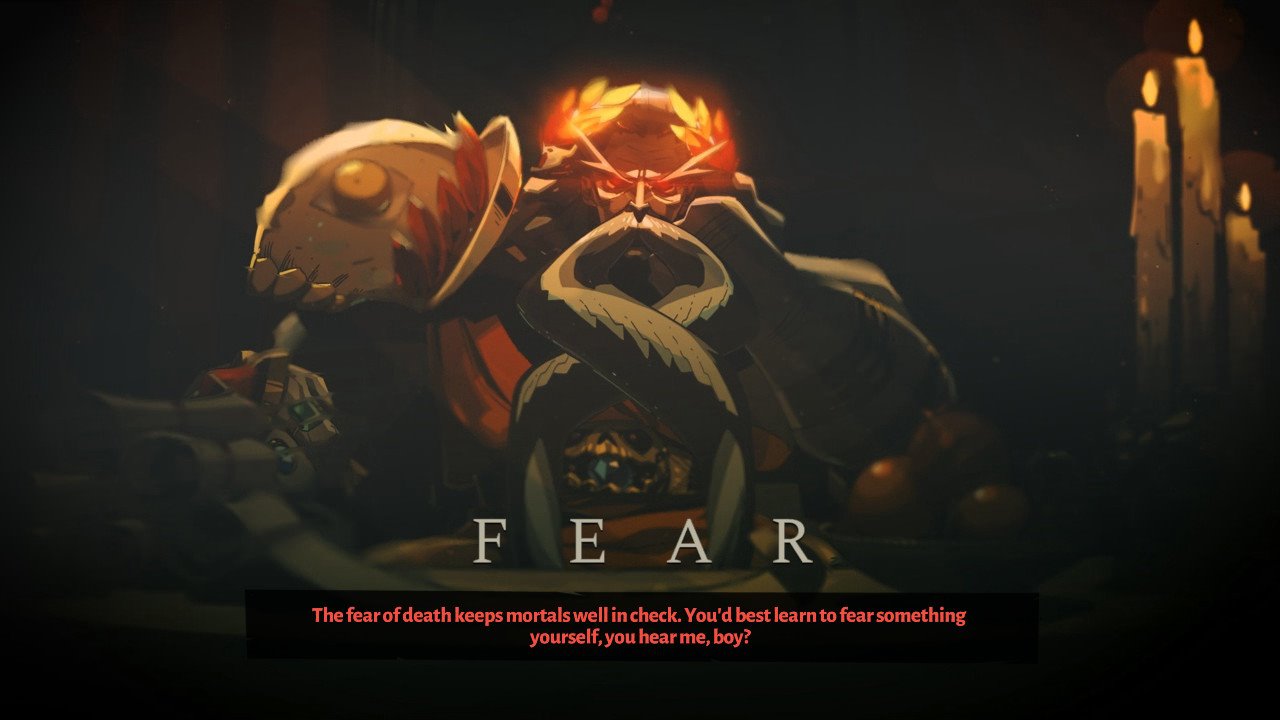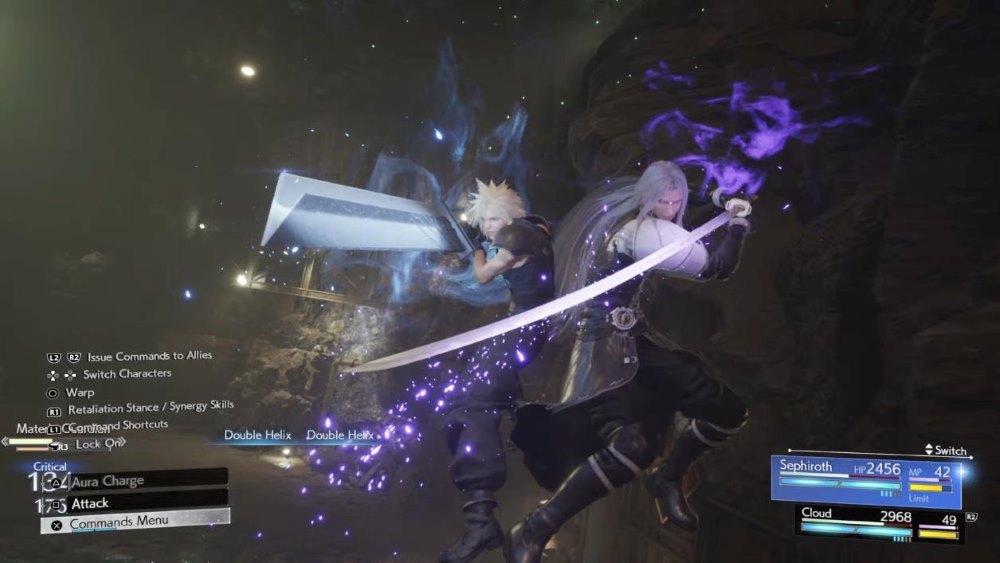What I Learned After One Hundred Escape Attempts On Hades
Ever since I picked up the game at the end of September, I’ve been hooked. At first, I jumped into the game thinking I’d try it out and then quit it after a couple of hours. The first few runs, I had that feeling. Go through the dungeon and as a roguelike, I would die. It was daunting, I wondered how I could actually beat the game if I’m gonna restart every time I keep dying? Eventually, I unlocked weapons and I enjoyed some of the gameplay. After a dozen or so attempts on this save file, I realized that I’ve wasted my rare drops for instant gratification and wasn’t feeling God Mode at all. I started a new file and progressed quite quickly after that.
It’s ironic that when I run into a problem, I go through a cycle of saying this game is impossible, I’ll probably quit followed by uncovering something else that reignites my passion to conquer the game. Playing it on Nintendo Switch, the game has no achievements making my desire to beat the game its sole motivator. The last time I played without the motivation of achievements would be Persona 3 Portable.
At the time of writing, I completed one hundred escape attempts throughout three separate adventures. Considering the fact that I average about 45 minutes per run, because some runs require more precision and some require a lot of speed. That’s 75 hours alone excluding the time I spent in the House of Hades and the twelve hours I spent on my primary run and my exploration of Hell Mode, so I’ve spent about a good hundred hours on this game at this point. I’ve only escaped the prescribed ten times to see the credits roll, and mostly because I was grinding sub-quests and keepsakes. I also attempted the Heat Gauges as the rewards at this point not only made my skill better as a player, but the rare bounties made me unlock different aspects of the story or make my existing weapons strong.

The First Fifteen Runs – Temptation of God Mode
I didn’t exactly enjoy my starting few runs of the game. Mostly because of that daunting experience where you accidentally die on Asphodel on your sixth run, only to start from the very beginning to face the same difficult mini-boss and boss fight at the end of Tartarus. God Mode is an option you can switch on from the menu and on my tenth run, I flipped the switch. Sure I made it to Elysium after that, but I felt I didn’t earn the rewards from that run. Combined with the fact that I messed up my Nectar allocation and traded my Titan’s Blood for cheap gemstones, after my fifteenth run, I started a new game. This time I’m doing it right.
Runs Sixteen to Forty – Tasting Freedom
When I started a new game, I knew what to do in my first few runs and what to set up. Gift the Nectar to the right confidant, grind some beginner Keepsakes, make sure I have the right build on the Mirror of Night, and make it as far as I can. On my 38th run, I was able to finally make it out. It was my second fight with Hades and I had a shield. It also took me a full hour to complete said run. With a beginner build and playing as safe and precise as possible, I was able to edge out the big man with a few lucky breaks in between. Patroclus is a lifesaver granting extra Death Defiance when you’ve used them up thwarting the Furies and Lernie, The Bone Hydra. I thought I was done, but my journey was just beginning…
Runs Forty-One to Fifty-Five – Fail, Fail, and Fail Some More
This is when it started to get frustrating. With the exception of my ultra cheese run that involved carpet bombing the place with my Adamant Rail, every fight with Hades ended in defeat. I tried every trick in the book to stop the guy, but without hiding behind the shield and skipping the fully upgraded Broken Spearhead to grind all my other keepsakes. The damage output of Hades and his cohorts whittled me down to a mangled rag doll. Sometimes it’s not even Hades, but Theseus and the Minotaur always seemed to have their way. By run fifty, I was consistently making it to Hades with little life left in me, all he had to do was hit me with one spin attack to send me flying back to The House of Hades.
Runs Fifty-Six to Seventy – Small Victories and Continued Defeats
My favorite part of this Sisyphean quest are the times when I pulled through and secured the rest of my wins with the other weapons in my arsenal. After that, it was a few great runs with the Twin Fists of Malphon and learning how to time my dash-strikes and combos. I went from two successful escapes to eight in a few small streaks. It also helped that many of my skills are maxed out and my response to game was in my muscle memory. While the game is mostly about trying to escape, I did mention about the Relationship Sub-quests that litter this game that give you insight with the Olympian Gods and also the Chthonic Gods. Coupled with the Pacts of Punishment and grinding keepsakes, my frustration is balanced out with curiosity.
Runs Seventy-One to Eighty-Five – The Painful Stretch To The End Credits
I continued to increase my Heat Gauge to reset my bounties and at the same time, grind my keepsakes and improve my relationships. Plus tried to complete every sub-quest. It resulted in uneven and unfocused load-outs that made Hades do easy work on me after being weakened on the stretch to reach him. This resulted in short runs due to playing around with new skill sets and new weapon aspects. This eventually concluded when I finished my keepsake grind after the eighty-third run leading to a back-to-back escape that got me to the End Credits. I still have ways to go for a completionist ending, but I’ve seen an ending and at this point, I was getting exhausted playing with a small screen with a Switch Mini. Next time, I’ll play using a larger screen.
Runs Eight-Six to One Hundred – Exploring Erebus and A Brush With Hell Mode
I started to mess around with the game a bit more, cranking up the Heat Gauge to as high as I could in order to enter Erebus where you wager your current run for a double or triple helping of a reward. You either engage in a no damage encounter or a timed encounter, where you have to defeat all the enemies while fulfilling the parameters. Also, you can challenge The Boatman, Charon, to a fight after you try to steal his stash. It’s a tougher fight during the early stages of the game, and it is best to challenge him around Asphodel where you’re powered up enough. I recommend using the final keepsake you receive as it powers up your Boons after six encounters. If you manage to beat him, you get a discount card. Woohoo.
As I grew tired of playing around, I tried Hell Mode that was offered when starting a new game. You start out with a mandatory Pact of Punishment on Heat Gauge Five. With nothing to start with, you are thrown into Tartarus with only your blade and your wits. After nearly a dozen tries, I put the game down and realized that I’ve had my fill of Hades. With a hundred runs, they said it takes 10,000 hours to be proficient in a skill, and barely scraping a hundred hours of game time, I could say I learned a thing or two that I would probably forget once I start diving into Cyberpunk 2077 later next month.
Lessons In Futility – Speed With Precision
“Do it well and then do it fast,” is something I’ve heard from work supervisors a lot more times than “insanity is doing the same thing over and over and expecting a different result”. It is tempting to go for a speed run every time because the more you take your time, the more the hours add up. I would make a revision on that adage by saying, learn to be precise and when you’ve mastered that, go fast.
A great way to train this skill is to stop using Greater Reflex on your Mirror of Night and switch to Ruthless Reflex. That way, you will learn how to dodge properly because it requires precise timing. Plus dashing all over the place does not teach you anything besides being reckless. Although that strategy works really well with the Stygian Blade and the Twin Fists.
There are massive benefits to learning to be precise, however. You can memorize enemy movements until they become muscle memory. You can weave into highly populated areas with enemies and projectiles while aggressively getting close for a power combo. This way you can take advantage of the near miss bonuses. When you switch back to Greater Reflex, you can make the most of your two dashes, and now you can really make a dent with your damage output.
Lessons In Futility – Long Range versus Close Quarters Battle
Out of my successful escapes, I’ve used the Twin Fists the most. Now you ask, why do you want to get close? The truth is, the game is designed to make you comfortable with long range battle. Four out of the six weapons are designed with long range in mind. Then you get comfortable with the range and you end up looking for ways to push back. This is what will hamper your future success. You want to escape? Don’t be afraid to get close.
The magic of getting close with the fists is how much of the damage builds up at close range. Aspect of Talos is my aspect of choice because the vacuum component is great for board clearing. You can easily defeat weaker enemies and you can dance with the bigger and armored creeps for last. Ensured that you’ve learned controlled dashing from my statement above, if you combine the vacuum punch aspect and add Poseidon’s Flood Shot as your cast, you can control the board with the push and pull aspect. The enemy starts getting aggressive, Cast to push back and stun, then Special to pull back in. Then you lay on the Pacman punches. If you’re feeling really fancy, then you add a dash behind the enemy for backstab damage and then keep them guessing.
Lessons In Futility – Edging Out Hades
You don’t rush Hades. Out of the forty or so times that I’ve lost to Hades, it’s because I came unprepared or I came too prepared and rushed him. As a boss, he’s straightforward enough, it’s frustrating to lose to him especially if you came prepared for a fight. His real strength is heightened damage, heightened vitality, and his goddamned spin attack. When he fills up the screen with enough of his Skull Cast and Wretches, it’s easy to lose sight of him and he will hit you with everything he’s got. So when the screen fills up with enemies, focus on a single target while watching out for Hades.
As I said in the past guides, Broken Spearpoint is your friend. This way if you miss a dash or if you forget to hide, it gives you a second to catch your breath without taking too much punishment. After a while the damage adds up and if you get caught in a bad way with Hades, he will put on the hurt. Also make sure your Cast and Call are skills you can setup and leave alone. Crystal Beam, Flood Shot, or Artemis Cast work well in that regard and Zeus, Ares, Poseidon and Artemis Aid are your friends. That way, you can concentrate on building your DPS with your attack and special. You do not need to overwhelm your micro with Cast and Call. Concentrate on three buttons (Attack, Special, and Dash), the target in front of you, and dodging Hades, anything more will overwhelm and that’s when you’ve already lost.

Lessons In Futility – Temporary Godliness
Concentrate on Three Gods, a single Daedlus Hammer, probably two Chaos deals and a Hermes for good measure. Everything else either invest in your health or to improve your skills. For your Mirror of Night setup, use Family Favorite, Dark Foresight, Gods’ Pride, and Fated Persuasion.
All of your later runs are dependent on the RNG you receive. While Privileged Status allows you much damage when you have two status effects set up. However, Ares, Zeus, Poseidon and Artemis aren’t known for the status effects, splashing a bit of Aphrodite, Demeter, Dionysus, and Athena takes away from your total damage output. Family Favorite gives bonuses on your Boons regardless of its type. So whether you’re spamming lightning, doom blades, or critical arrows, it gives you the extra edge. Dark Foresight increases your chances for Daedalus Hammers, Centaur Hearts, and Pomegranates to strengthen what you currently have rather than relying on Boon RNG. While Duos and Legendaries are amazing to have, I’d rather go for an Epic skill with Gods’ Pride and to use your Fated Persuasion to cycle through the skill choices.
This way, matched with your already skillful dodge, high damage CQB, powerful cast and call setup, once you have enough support boons to supplement your DPS, maybe you don’t need that much Death Defiance to make it through the game. The main key now is to make sure you only die once with Hades.
Just as an aside, a maxed out relationship with Dusa gives you a kitted out Companion Fidi. I usually use this to deal a good amount of damage to Theseus and Asterius at the end of Elysium. Out of the three bosses that’s not Hades, they still can catch you off-guard. By chipping away a good chunk of the champions’ health then you can divide and conquer between the two and get rid of them according to your setup strength and weakness.
Thank you for joining me in this prolonged love affair with Hades, a game that I thought I would shelve for a good year before picking it up some time in 2021. As with all things cool, I keep my obsession for it intermittently brief. It’s been a blast and I hope you enjoyed reading these articles and best of luck making your own 100 escapes!








